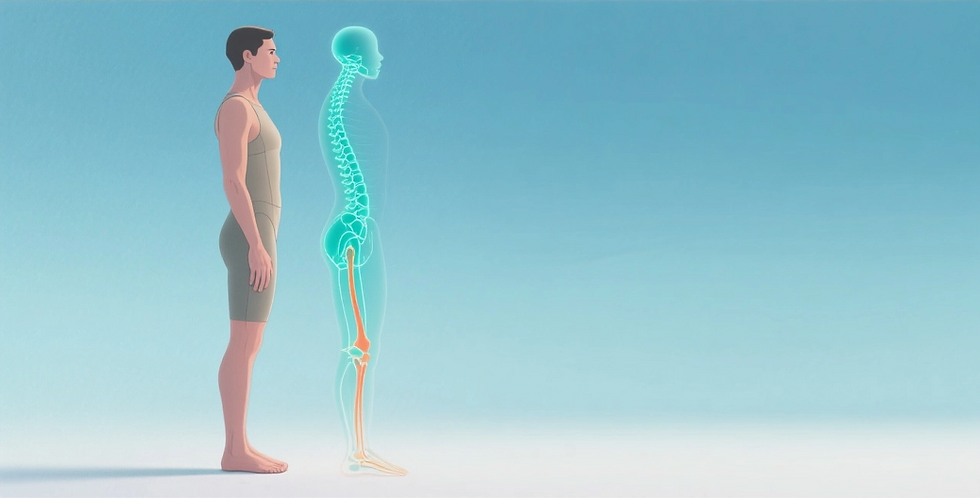"How Foot Imbalances Contribute to Common Sports Injuries: Understanding the Link
- Luc

- Dec 21, 2024
- 3 min read
Updated: Feb 3
The Link Between Foot Imbalances and Common Sports Injuries
There is a clear connection between foot imbalances and some of the most common sports injuries. The feet play a crucial role in maintaining stability, balance, and overall body alignment during physical activities. Foot imbalances can disrupt biomechanics, increase the risk of injuries, and lead to various common sports-related issues. Here’s how foot imbalances are linked to frequent sports injuries:
1. Ankle Sprains
Foot imbalances, such as overpronation (excessive inward rolling of the foot) or supination (insufficient inward rolling), can lead to poor ankle stability. This instability increases the likelihood of ankle sprains during sports that involve jumping, twisting, or sudden changes in direction, such as basketball, soccer, or volleyball.
2. Heel Spurs
Excessively high arches or flat feet can alter weight distribution on the foot, leading to imbalances in the plantar fascia. This can result in heel spurs, a common condition in sports that involve repetitive running or jumping, such as long-distance running, basketball, or tennis.
3. Shin Splints
Foot imbalances can cause overloading of certain leg muscles, resulting in shin splints. Athletes with poor foot mechanics are more likely to experience shin splints in sports that involve running, jumping, or high-impact activities.
4. Stress Fractures
Foot imbalances can lead to abnormal force distribution through the feet and legs. This increases the risk of stress fractures in weight-bearing bones, particularly in the lower legs, during activities with repetitive impacts, such as long-distance running or dancing.
5. Achilles Tendonitis
Overpronation or supination can place excessive strain on the Achilles tendon, making it more prone to overuse injuries and inflammation. This is common in sports that involve sprinting, jumping, or abrupt starts and stops.
6. Knee Injuries
Foot imbalances can affect the alignment of the lower limbs, altering the mechanics of the knee joint. This can increase the risk of knee injuries, such as patellofemoral pain syndrome or anterior cruciate ligament (ACL) injuries, in sports that involve running, jumping, and pivoting.
7. Hip and Lower Back Pain
Foot imbalances can lead to improper gait patterns and muscle imbalances in the hips and lower back. This can contribute to conditions such as hip bursitis, hip labral tears, and lower back pain during various sports activities.
Preventing Sports Injuries Related to Foot Imbalances
To reduce the risk of sports injuries associated with foot imbalances, athletes and individuals can take the following steps:
Strengthening Exercises: Incorporate exercises that target the feet and ankles into your training routine to improve stability and balance.
Biomechanical Assessment: Consider a biomechanical assessment by a podiatrist, physical therapist, or sports medicine specialist to identify and address foot imbalances.
Proper Footwear: Wear well-fitted, supportive shoes designed for your specific sport and foot type to reduce stress on the feet and joints.
Orthotics: Use custom orthotics or insoles to correct foot imbalances and improve alignment.
Technique and Posture: Focus on proper running and movement techniques to minimize the impact of imbalances on your sports performance and injury risk.
Conclusion
Addressing foot imbalances and ensuring proper foot support can significantly reduce the risk of sports injuries and enhance overall athletic performance. By strengthening the feet, improving biomechanics, and using appropriate footwear, athletes can protect themselves from common injuries and maintain optimal performance.
Disclaimer: This is not medical advice but rather how I personally resonate with this topic because I look at the bigger picture. If you are experiencing foot pain or sports injuries. Do you have any questions regarding this topic?
Feel free to contact us for advice and support!






Comments